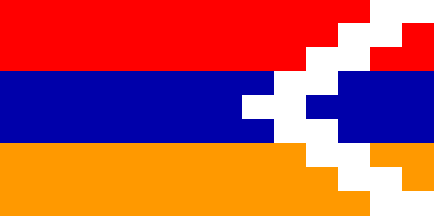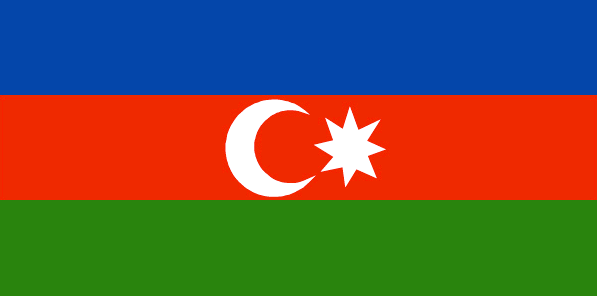


ICE Case Studies
Number 291, December, 2013
Kura-Araks Basin: Diplomatic Degradation and the Compounding Impact of Climate Change
Skylar D. Hurwitz
I.
Case Background
II. Environment Aspect
III. Conflict Aspect
IV. Env. - Conflict Overlap
V. Related Information
|
 |
|

Climate change has conquered the front pages of numerous international reports, media outlets and academic journals. The impending impacts are expected to be numerous and current technologies lack the ability to accurately predict how and when these impacts will be felt. For this reason, the international community has invested in the science of creating complex climate models, which are updated periodically so as to identify areas of particular concern. The purpose of this case study is to utilize those models, as well as historical and cultural events, in order to evaluate the potential for increased conflict along the Kura-Araks water basin in southwest Asia. Given that the lack of diplomatic relations between Azerbaijan and Armenia presents the highest potential for conflict, these two countries are the focal point of this research.
The current situation in the Kura-Araks water basin is a complex issue that came about as a result of the dissolution of the Soviet Union. In 1927, the USSR signed an agreement to share all waters along its border with Turkey, while actively monitoring the usage of the river by creating a water oversight commission. A similar agreement was signed between Iran and the U.S.S.R in 1957 (Newton). At the fall of the Soviet Union in 1991, the creation of numerous new nation states with no diplomatic agreements amongst one another led to a multitude of issues in terms of borders and resources. In the instance of the Kura-Araks, the nation states of Georgia, Azerbaijan and Armenia were created. The latter two states quickly signed bilateral agreements with Iran to continue the shared water resource usage and monitoring program from Soviet times (Newton).
Ethnic and political issues have prevented these three natinos from signing proper water treaties with one another in the aftermath of the Soviet Union. Of particular importance is the ongoing dispute over the Nagorno-Karabakh region, which started as a violent conflict in 1988. The failure to resolve this issue has led to the current situation, which sees Armenia and Azerbaijan living side-by-side with no diplomatic relations.
The Nagorno-Karabakh War/Artsakh Liberation War took place from February 1988 through May 1994. The conflict involved the majority ethnic Armenian's fighting the Republic of Azerbaijan for control of the Nagorno-Karabakh region in the southwest of Azerbaijani territory (McGuinness). As borders were being drawn for new nations at the collapse of the Soviet Union, a local referendum was held. The result was war when locals declared that the Nagorno-Karabakh region wanted independence from Azerbaijan and unification with their kin in Armenia. Despite Armenia declaring victory in 1993, the conflict continues to divide the region. Furthermore, a complete dissolution of Azerbaijani-Armenian communications began in the early 90s (McGuinness).
On a separate note from this case study but relevant to regional relations, Turkey was accused of massacring more than 1 million ethnic Armenians during World War 1. During the Artsakh War, Turkey sided with Azerbaijan and ended relations with, and closed its borders to, Armenia ("Turkey-Armenia: a decades-old dispute"). Therefore, Armenia has been almost completely isolated from two of its neighbors for nearly two decades.
Fast-forward to the modern day, and the integrity of the Kura-Araks basin is being severely threatened by mass pollution (Newton). Given the fact that Azerbaijan, Armenia and Georgia rely heavily upon this water source for municipal, industrial and agricultural uses, it is clear that something must be done. However, with no diplomatic ties existing between Armenia and Azerbaijan and no previous treaties to regulate pollution on the river, it has become clear that the sustainability of this water source has been jeopardized (Khachturyan). The best attempt at solving this issue came in 2002. Numerous NGOs, the European Union, Georgia, Armenia, Azerbaijan, and several other actors convened in Tbilsi, Georgia for a conference on "Water Resources Management in the Countries of the South Caucasus." Several recommendations for successful management of the water resources in the region were made, but few have been implemented as a result of the continued diplomatic stalemate between Azerbaijan and Armenia (Newton). Perhaps the only notable result of these conferences was the creation of the European Union's Project on Trans-Boundary River management for the Kura River basin. The project is meant to create common operating and monitoring procedures along the Kura River in order to manage pollution along the basin ("EU Project: Trans-Boundary River Mangement Phase III for the Kura River basin - Armenia, Georgia, Azerbaijan").While noteworthy progress has been made, one must consider the compounding impact that climate change will have on the potential for conflict in this historically unstable region when steady diplomatic relations do not exist.
As the Soviet Union's decline began in the late 1980s, borders began to be drawn for newly independent nations. The former Soviet States of Azerbaijan and Armenia, were at war for nearly 6 years regarding claims to the Nagorno-Karabakh region. Since 1994, there has not been any violent conflict; however diplomatic ties are nonexistent to this day. As pollution along the shared water basin increases and the water supply decreases from climate change, the diplomatic scuffles between these two nations will likely heat up again.
The location of the cast study is along the Kura-Araks Basin in Armenia, Azerbaijan and Georgia. The Nagorno-Karabakh region is of particular interest because of the violent conflict that took place there between 1988-1994 and the diplomatic repercussions that resulted.
In Figure 1 (below), the Kura Araks water basin is outlined by a dark blue line. Determining the precise areas within the basin was difficult because of the limited information on this particular case. Of particular importance to the creation of this map was the Oregon State Case Study Database and Riversnetwork.org. Additionally, the Nagorno-Karabakh region is indicated by several light blue circles in western Azerbaijan because of its important role in the diplomatic relations of the region. The purpose of this map is to highlight the extent to which this particular water basin is depended upon. It is difficult to visualize the enormity of this issue without actually seeing how large of an area this case covers. Looking at this map, it is difficult to miss the fact that there are practically no other sources of fresh water for these three countries both inside and outside of the outlined region. One can easily observe Sevan Lake in the eastern region of Armenia; however, this is the only other body of water in the confines of the basin. In short, the Kura and Araks rivers essentially represent the sole major source of water for this region, making the quality of the water particularly important to the livelihood of all nations in the region.
Fig. 1: The Kura-Araks Water Basin and Nagorno-Karabakh Region |
 |
The event is taking place in the former Soviet territories-turned-nation states of Georgia, Azerbaijan and Armenia. The separate but relevant conflict between Azerbaijan and Armenia regarding the Nagorno-Karabakh region started in 1988. Ethnic Armenians were seprated from their kin following the creation of independent states at the fall of the Soviet Union. A war was fought to free these Armenians from Azerbaijani rule; however, the sovereignty of the region remains contested to this day. There has been no diplomatic communication between the Azerbaijan and Armenia, though the European Union has attempted to address the issue, with little success. The issue regarding the water basin began in 1991. With no diplomatic ties, it was impossible for Azerbaijan and Armenia to discuss a treaty on the Kura-Araks basin. Since these two actors did not form an agreement on usage and pollution of the water basin, any attempt at signing bilateral treaties with Georgia would be useless because any action by the third party would negate those terms (Newton) (Kerres). Turkey and Iran removed themselves from the issue by signing extentions of the effective treaties they had with the U.S.S.R. with the Caucus states, immediately upon their creation.
Looking to the future, it is difficult to predict when the environmental factors will begin to influence the current diplomatic stalemate. One could argue that they already are, with river flows in the Kura having decreased some 15% between 1930-1980. An event as simple as a prolonged drought could force these countries to resort to violence because of perceived unfairness in the usage of water. Later in this study, the environmental situation is further analyzed through the lens of climate change projections out to 2050 or 2100.

Pollution levels on the Kura-Araks water basin have reached unsustainable levels and the current diplomatic situation does not bid well for the future of the region. As the integrity of the water supply decreases and the population increases, agricultural production will begin to grow in importance. Without the water to grow crops with proper farming techniques, soil degradation has become a growing problem. Additionally, Armenia's habits of deforestation continue to amplify the desertification process. Climate change is going to increase regional temperatures by as much as 6 degrees Celsius, while simultaneously leading to a regional decrease in rainfall (Caramel). In total, this leads to a positive feedback loop of water supply degradation, as described later on in Section IV.
The climate in Armenia and Azerbaijan is temperate, with an average high temperature of about 30 degrees Celsius in summer, and an average low temperatureof roughly -8 degrees Celsius in winter. On average, there are approximately 25mm of precipitation (rain, snow, sleet, etc.) spread out across 7-10 days each month ("Armenia Weather and Climate Information").
The conflict has occurred in the region of Azerbaijan known as Nagorno-Karabakh, though this is unrelated to any climate issues. As irrigiation demand increases in the region because of population growth, the polluted water supply is further strained. The lack of relations between these two countries further exacerbates the environmental situation because of the inability to find a diplomatic solution to water usage and pollution regulations.

The international community is by-and-large currently unaware of the implications of the current situation along the Kura-Araks basin. This regional conflict between Armenia and Azerbaijan holds the potential to claim international attention if the hydrocarbon exports of Azerbaijan are impacted by a future conflict.
The number of deaths in the Nagorno-Karabakh war is disputed; however, estimates put the total between 20,000-30,000 lives lost ("Nagorno-Karabakh Profile"). Since the settlement of the war in the mid-1990s, there has not been any notable conflict in the basin. The militaries of these countries are not amongst the most developed; therefore, any future conflict would likely be on the same scale as that of the Nagorno-Karabakh war.

Figure #2: Causal Flow of the Kura-Araks Conflict |
 |
Climate change is expected to cause temperatures in the Middle East to rise 6 degrees Celsius in the next 35 years and the amount of rain is going to decrease as well. These two trends will lead to an even smaller water supply, which will likely add fuel to the flames of the social and political conflict that already exists. Additionally, the population in the region is slowly growing. Therefore, as the population increases, there are more polluters who contribute to the degradation of the water supply. In order to supply food for these additional members of society, it is necessary to increase irrigation in order to increase the food supply, further deteriorating the water supply. These negative consequences have already been observed, as studies indicate that the flow of the Kura River decreased 15% between 1930 and 1980 (Kerres).
At this point, one can identify several loops within the causal flow chart. First, there is the positive feedback loop that runs from political and social conflict, to water pollution, to water supply and back to political and social conflict. This essentially means that the conflict will continue to intensify if the relationship between these variables does not change. Without diplomatic relations, water pollution will continue, further deteriorating the water supply. As the water supply worsens, the populations most effected by water scarcity will become increasingly desperate and may resort to violent conflict.
The second feedback loop stems from population growth and the increased demand for food and expanded irrigation that will result from the population growth. This feedback loop does not share the positive feedback characteristics of the first loop; however, this secondary loop amplifies that positive feedback. While the population is not projected to increase at a significant rate, the pressure of population growth combined with the issues of climate change, will exacerbate the current situation.
The current situation revolves around the diplomatic impass between Armenia and Azerbaijan. The increasing dependence on oil and gas pipelines stemming from Azerbaijan's Shah Deniz fields for Azerbaijani government revenues, paired with international dependence on these hydrocarbon supplies, implicates that a large scale conflict between Armenia and Azerbaijan could expand to involve numerous other actors if production were to be interrupted.

Case #10: Nagorno War and Armenian Deforestation
Case #179: Armenian Independence and Deforestation
Case #252: The Ferghana Valley: A Soviet Legacy faced with Climate Change
Case #274: Tana River Disputes in a Drying Climate
"Fifth Assessment Report." Intergovernmental Panel on Climate Change. 2013. http://www.ipcc.ch/report/ar5/wg1/#.Up0hJI0x-2w
"Average Weather and Climate in Armenia." World Weather and Climate Information. 2013. http://www.weather-and-climate.com/average-monthly-Rainfall-Temperature-Sunshine-in-Armenia
"EU Project: Trans-boundary River Management Phase III for the Kura Aras Basin." http://www.kuraarasbasin.net/EU_KuraAras_webpage/Kura_River_Basin.html
"Case Study of Trans-boundary Dispute Resolution : the Kura-Araks basin." Joshua Newton with Oregon State University. http://www.transboundarywaters.orst.edu/research/case_studies/Kura_Arkas_New.htm
"Azerbaijan Armenia: Karabakh's smouldering conflict." Damien McGuinness. 2012. http://www.bbc.co.uk/news/world-europe-20528275
"Turkey-Armenia: a decades-old dispute." Euronews. 2010. http://www.euronews.com/2009/10/10/turkey-armenia-a-decades-old-dispute/
"Temperatures to rise by six degrees in Middle East countries." Laurence Caramel. 2013. http://www.theguardian.com/environment/2013/jan/08/middle-east-temperature-rise-climate
"Adaptation to Climate Change in the Kura-Aras River Basin." Martin Kerres. 2010. https://www.kfw-entwicklungsbank.de/migration/Entwicklungsbank-Startseite/Entwicklungsfinanzierung/Sektoren/Wasser/Klimawandel/Kura-Aras-River-Basin-Snapshot.pdf
"Nagorno-Karabakh profile." BBC News Europe. 2013. www.bbc.co.uk/news/world-europe-18270325
"Transboundary water issues in the Kura Araks water basin." Marianna Khachturyan. 2011. http://digitalcommons.com.unl.edu/cgi/viewcontent.cgi?article=1550&context=agecon_cornhusker
